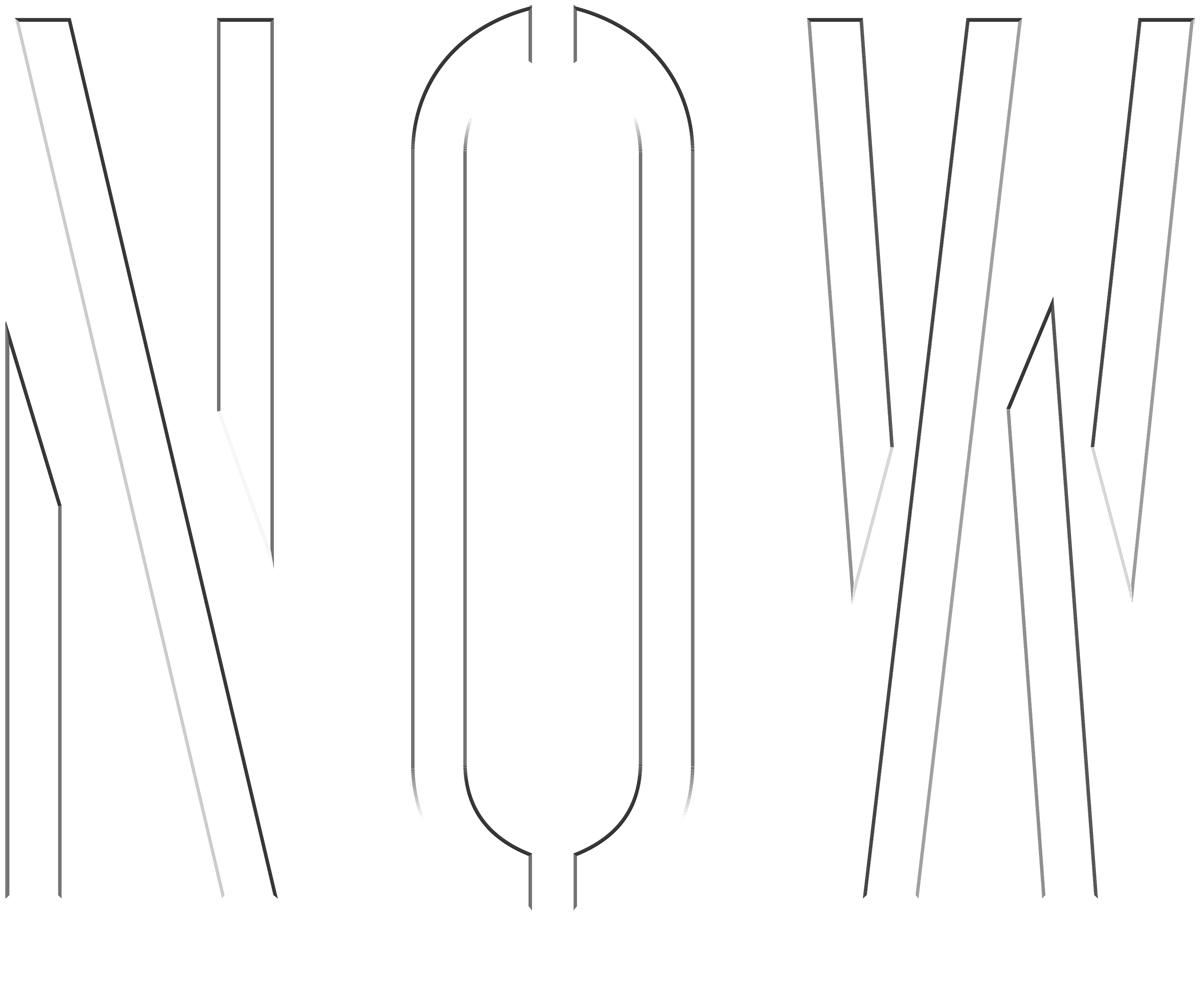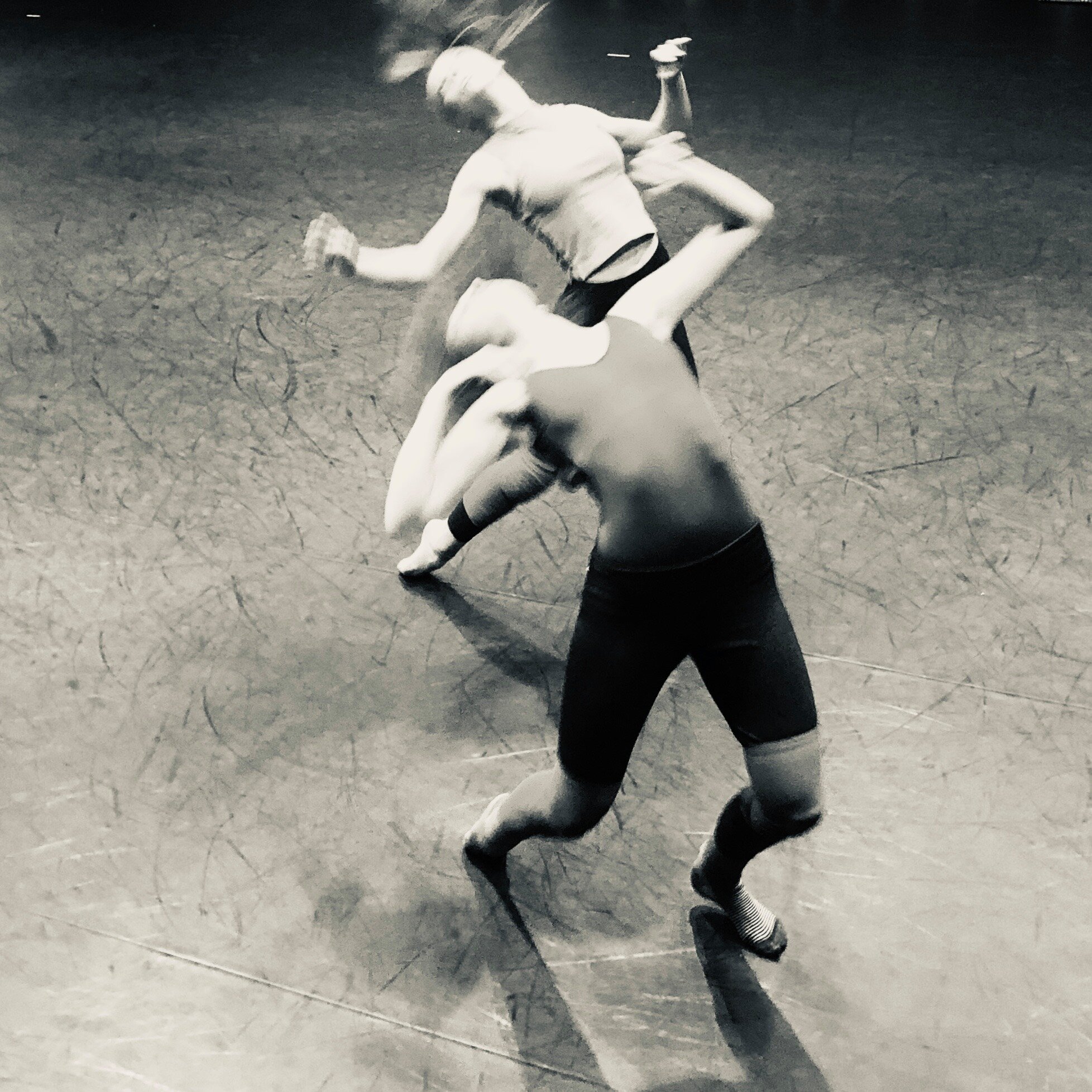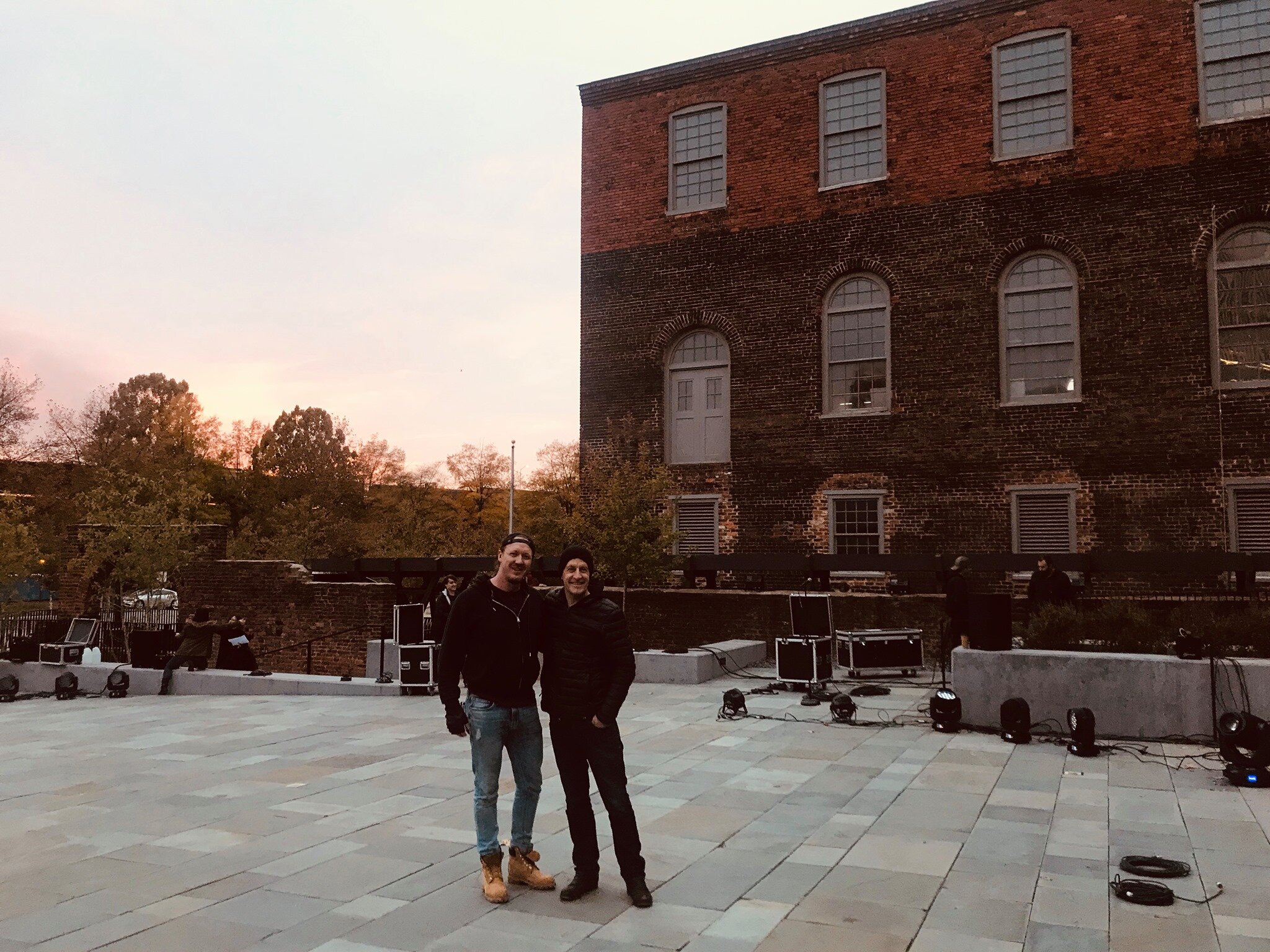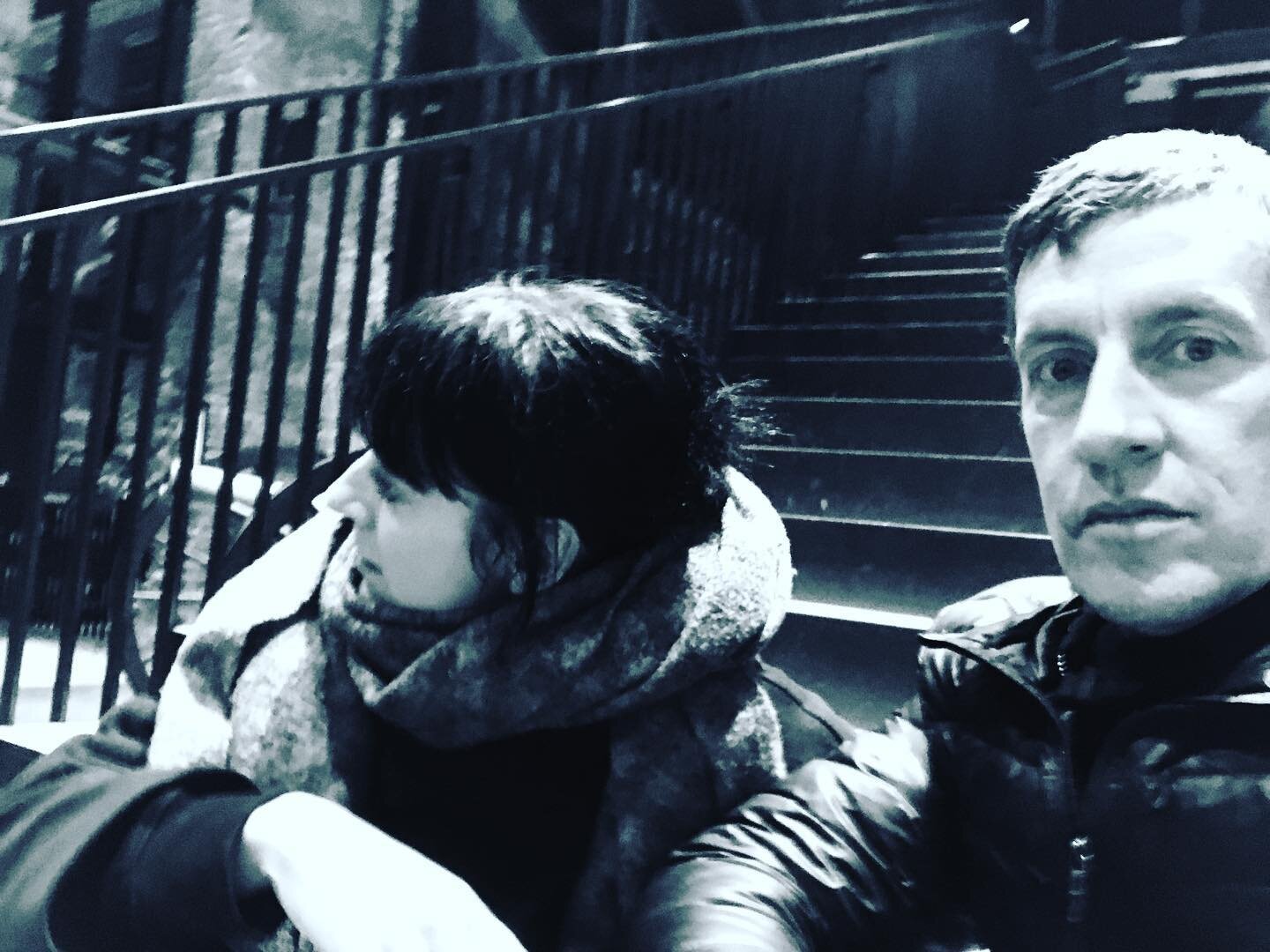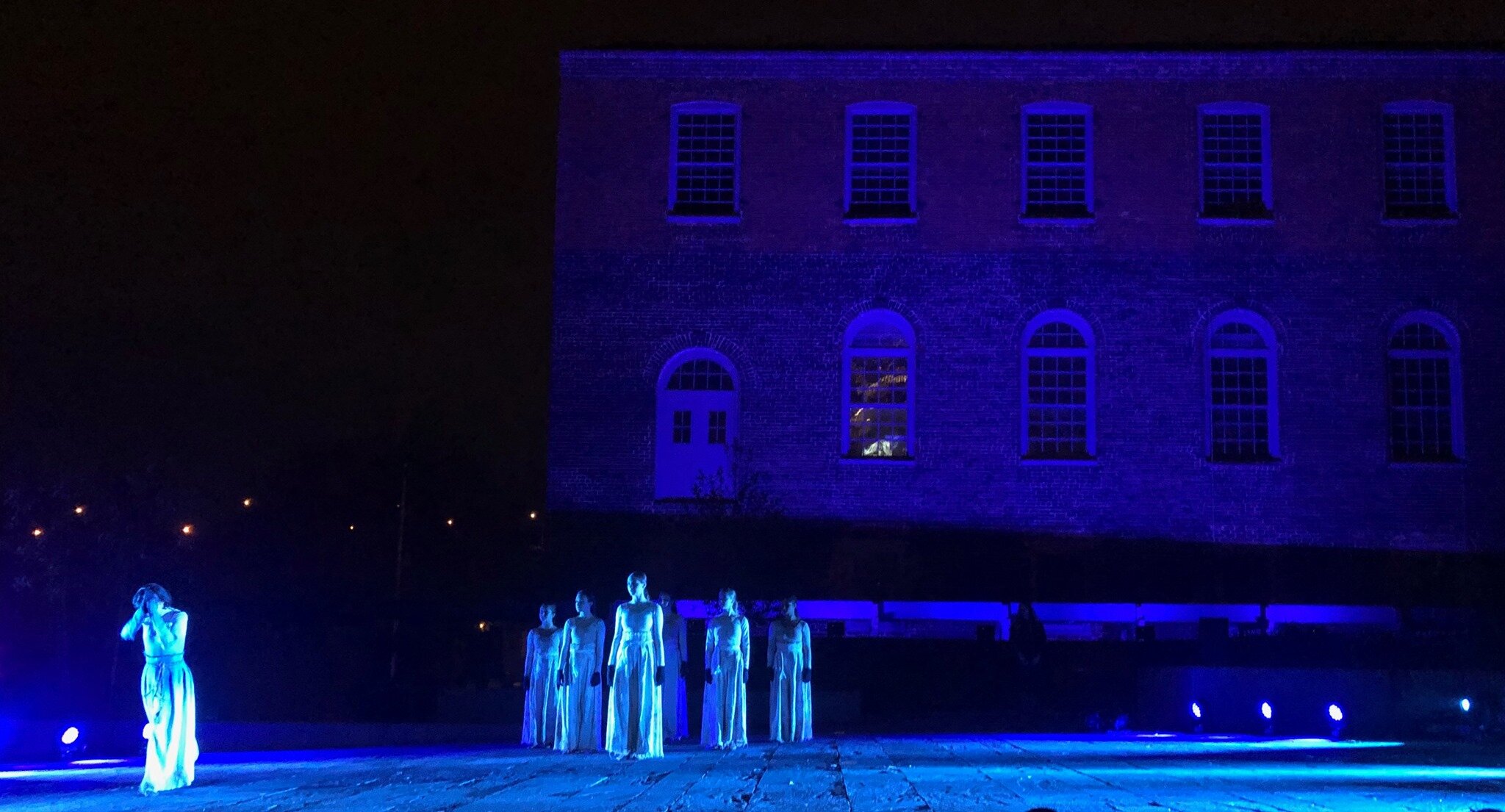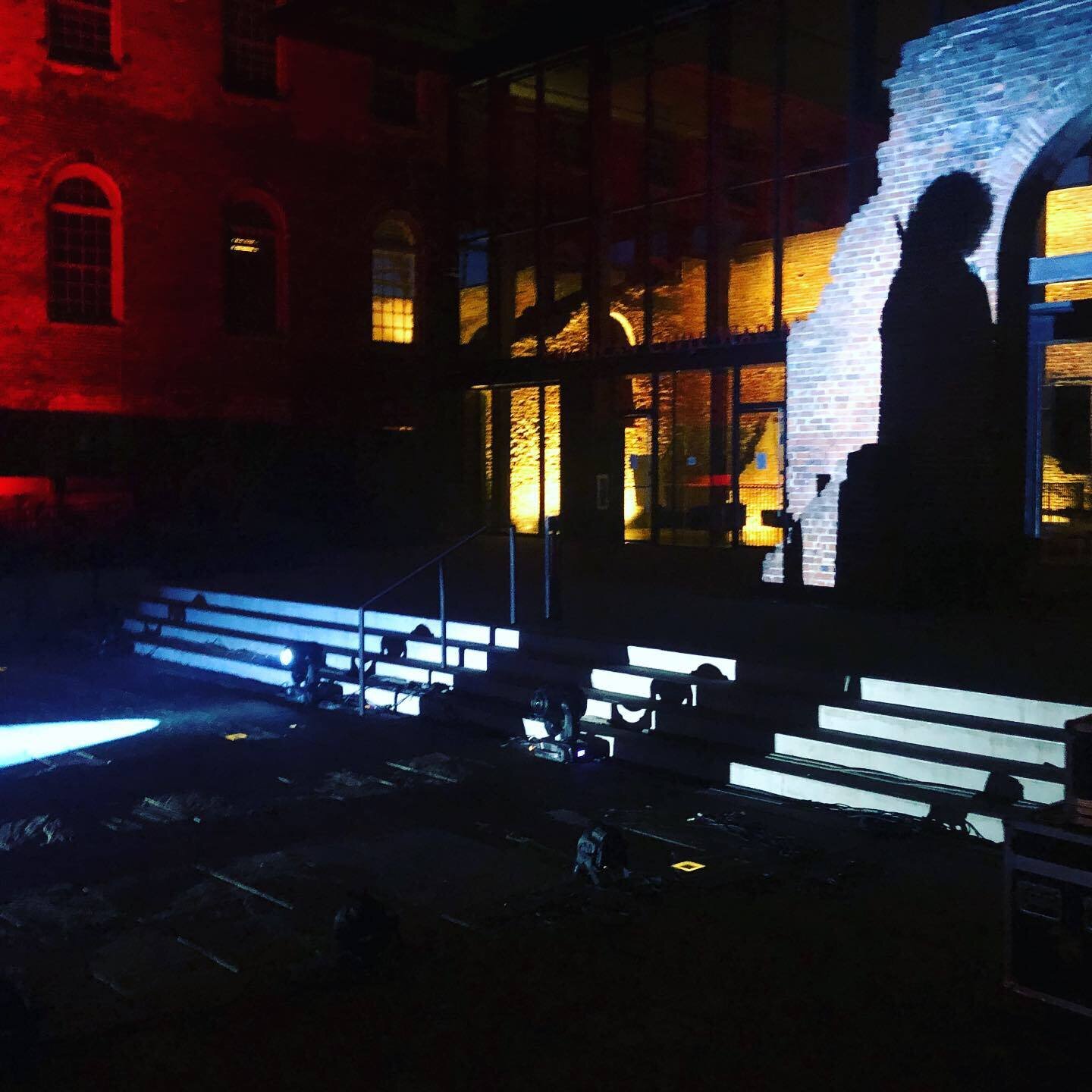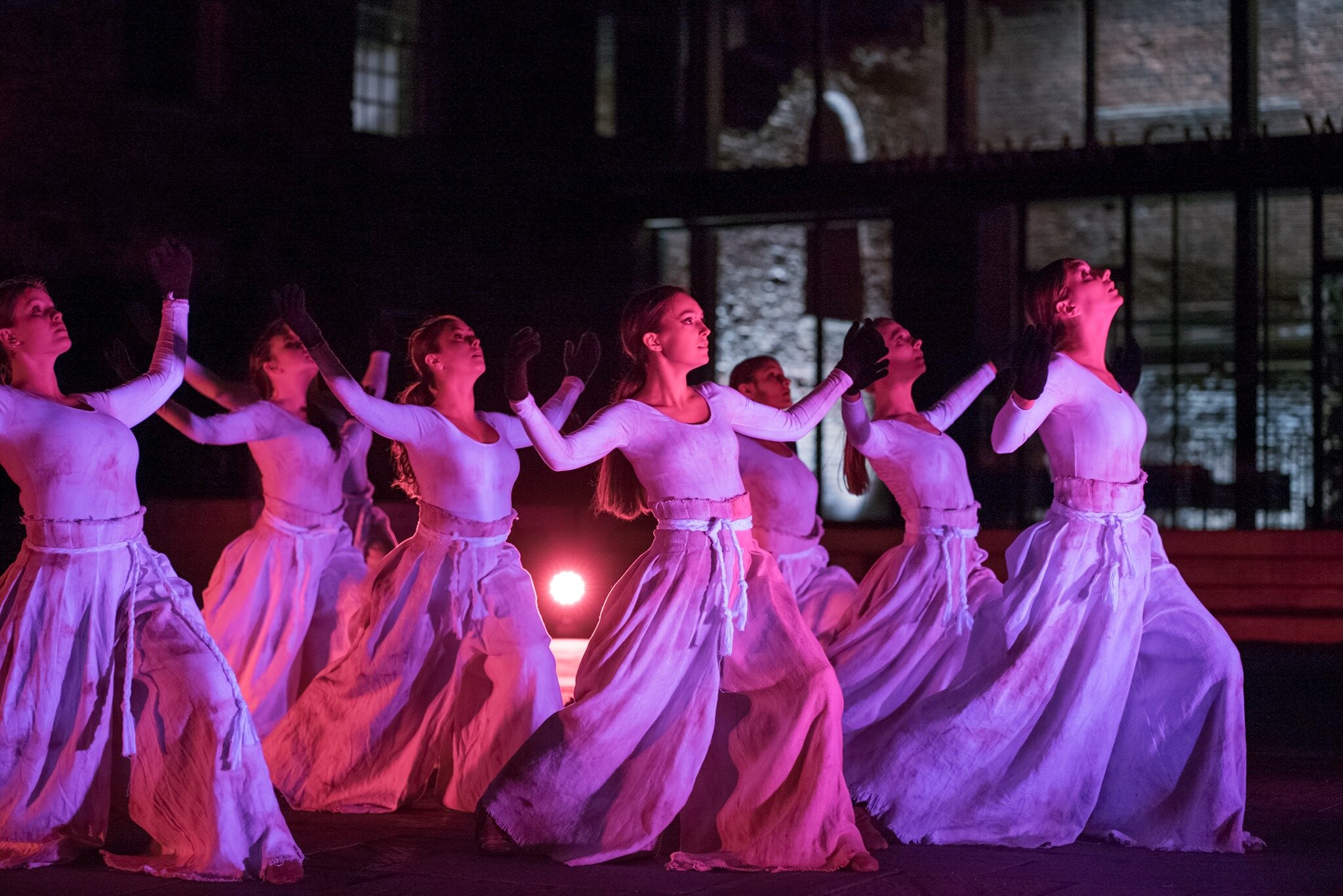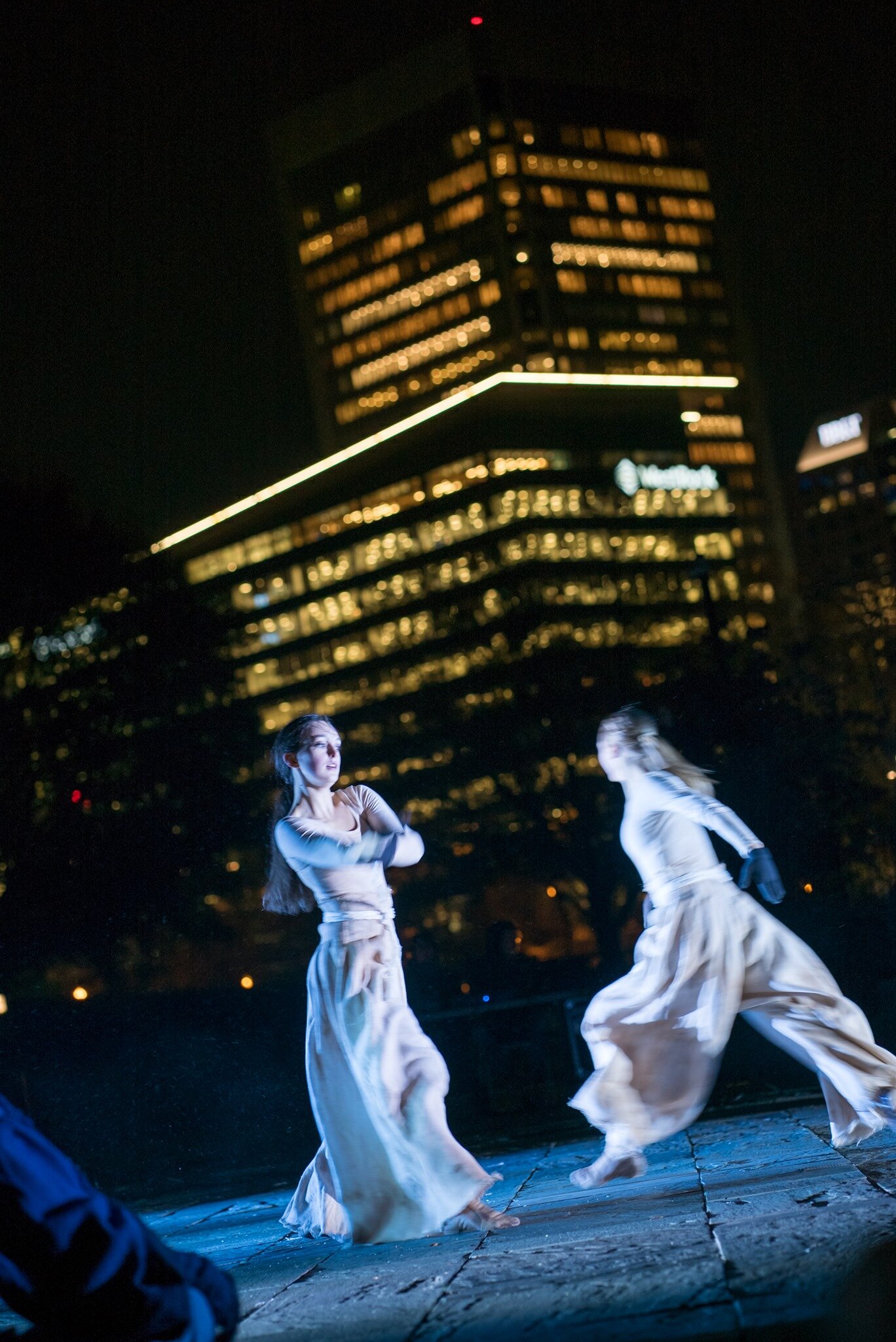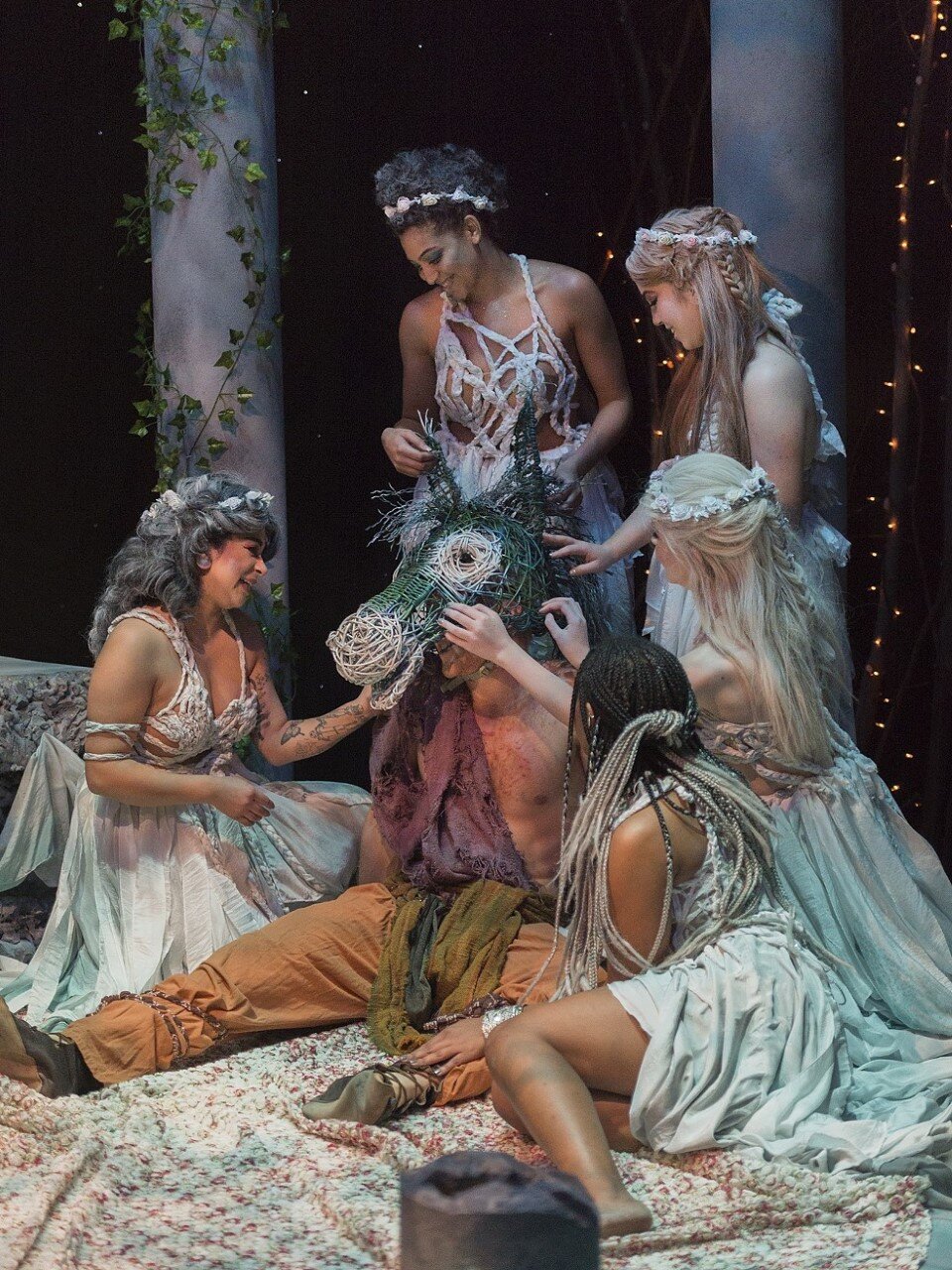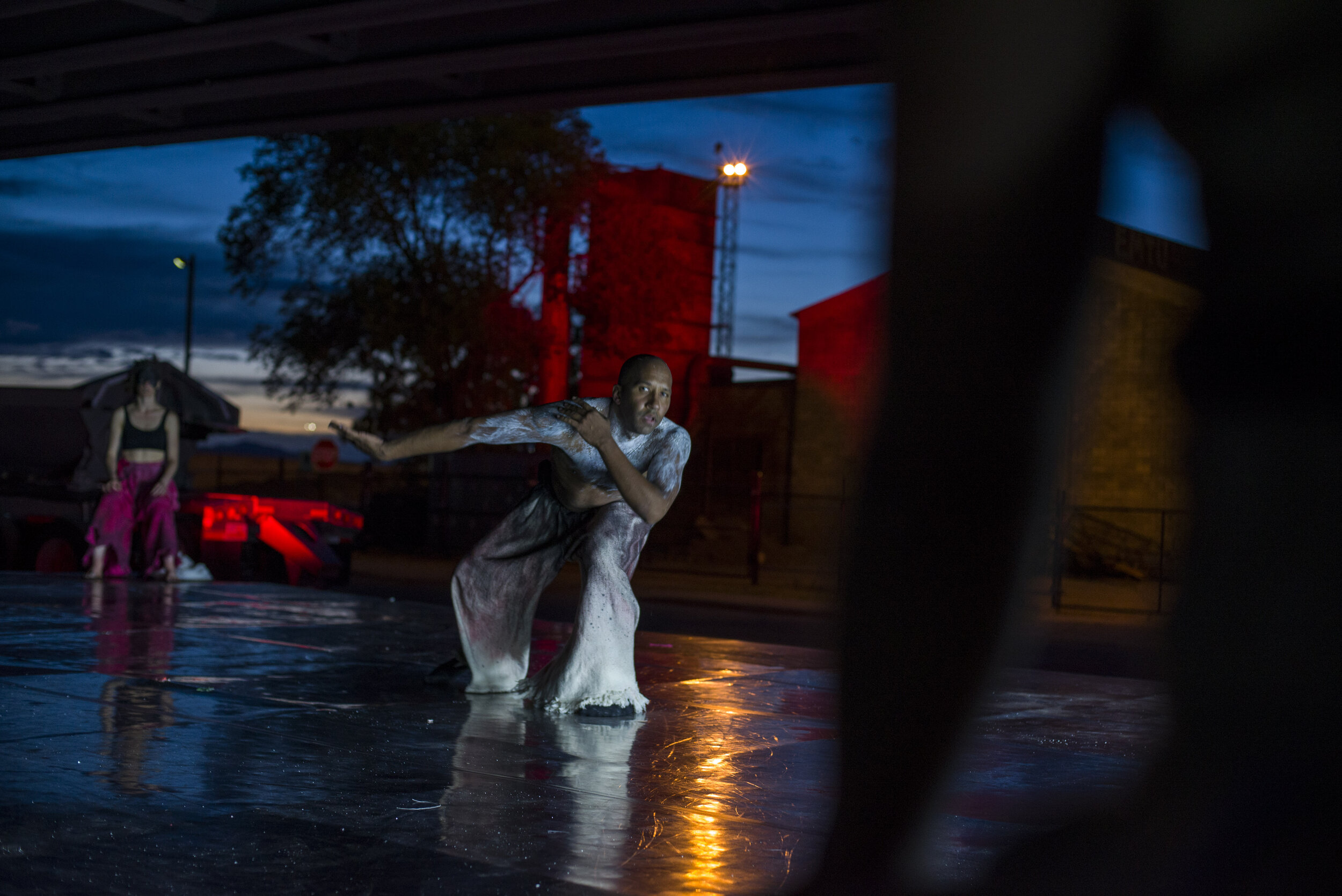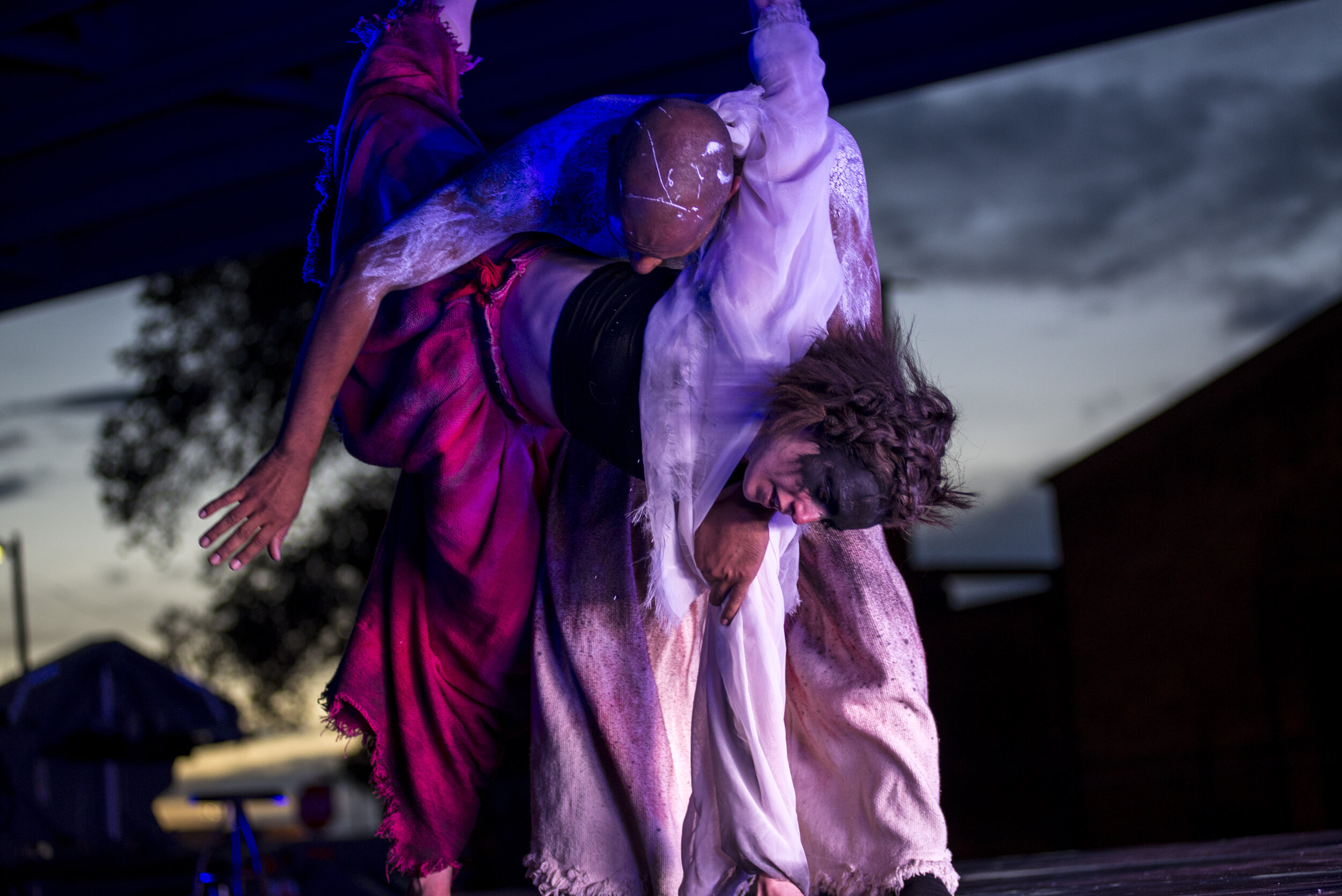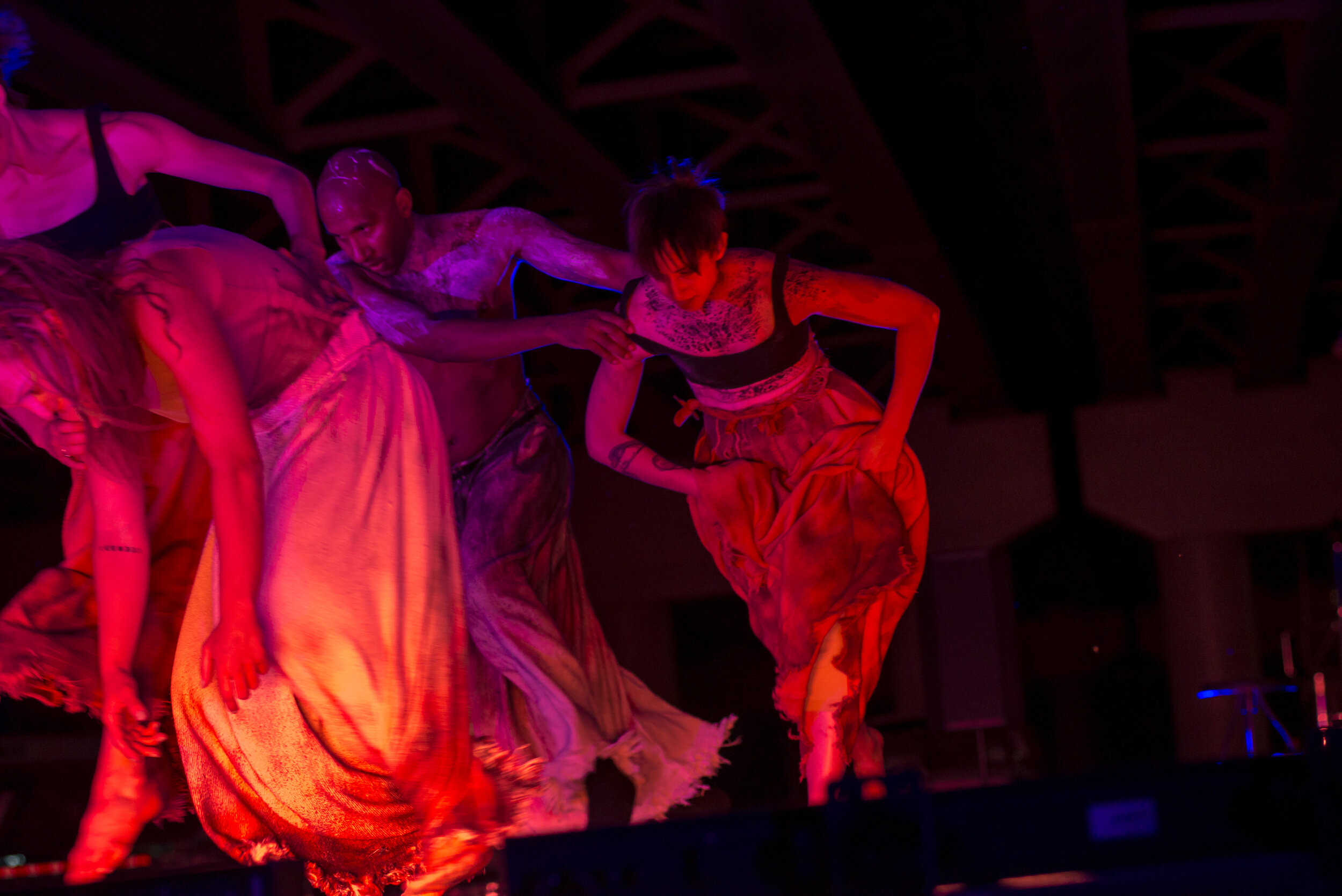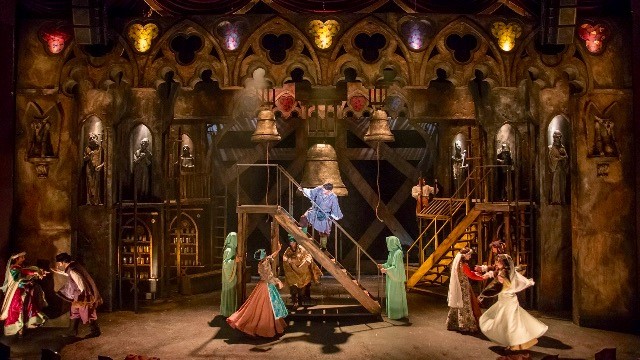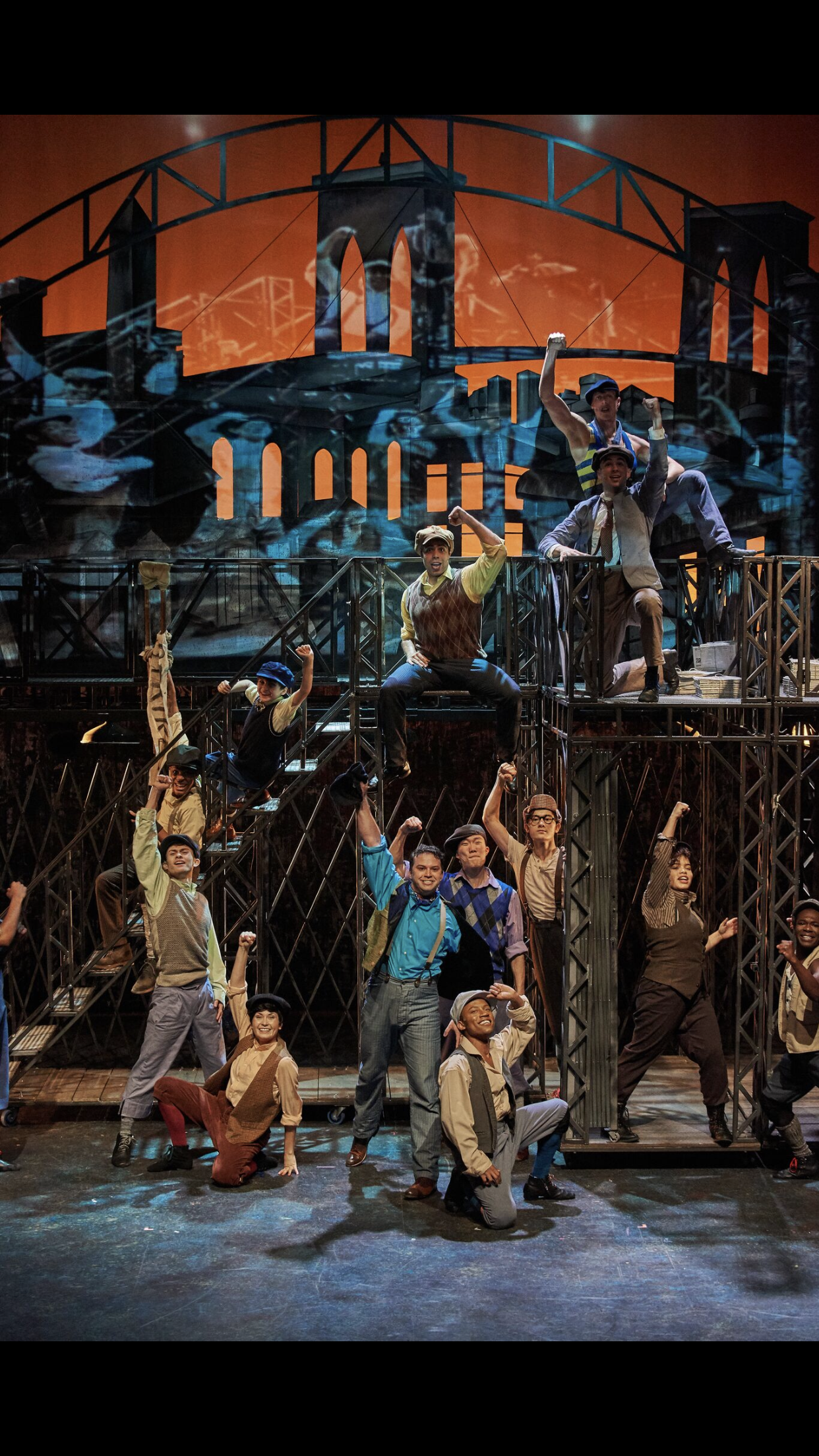The Menil Collection - Dan Flavin. /
Charlotte went on a recruitment trip for Texas Tech University to Houston and managed to visit the extraordinary Menil Collection while she was there.
Flashback Friday!! /
“The Wedding” 2013
Residency at Washington and Lee University. /
Charlotte spent the weekend at Washington and Lee University in Virginia doing a short residency at the Department of Theater, Dance, and Film Studies. The University is situated in the historical town of Lexington, Virginia.
Final images from "Cross/Currents"! /
NYC /
Charlotte went on an art trip to NYC together with her students and faculty this week. They visited the Met, the Whitney, the High line, Movement research, watched productions, took classes and much, much more.
Exciting to watch students grow and have their minds expand through trips like this. #art #experiences#education #inspiration#moretocome #expandinghorizons#dance
Happy Holidays from all of us at NOW-ID! /
HAPPY HOLIDAYS
Images from 2019! /
Images from 2019!
Thank you to all of you who made 2019 such an amazing year - supporters/audiences/volunteers/dancers/collaborators/presenters/sites/and our wonderful Board!
Happy Holidays to all!
#nowidslc #sitespecificperformance#contemporarydance#nashvillesingaporetexasslcrichmond#collaborations #inspiration #2019#2020willbeexciting #physicaltheatre
Postcard from Copenhagen. /
Charlotte was in Copenhagen last week and sent this photo.
Short video of "Cross/Currents" edited by Jan Andrews. /
"Creative Problem Solving" /
We are impressed by these thoughtful responses that students in a “Creative Problem Solving” class at the University of Utah’s honors college had to Nathan’s lecture on the collaborative and site specific work that we do!
“After class the students each wrote several paragraphs about they learned. They mentioned the potential for architectural staging in dance, the role of location, the need for creativity when functioning within a limited budget, and the importance of a strong vision.” Julie Matis
"Cross/Currents" /
Photos by Christopher Risch.
"Cross/Currents" rehearsal photos at the University of Richmond! /
Photos by Christopher Risch
https://www.christopher-risch.com
Some photos from the "Cross/Currents" process on site and in the studio. /
Some photos from the process of creating “Cross/Currents” in Richmond, Virginia.
More to come!
NE PLUS ULTRA: COSTUME DESIGNER MALLORY PRUCHA /
Mallory Prucha
Mallory Prucha is an Assistant Professor of Costume Design at Texas Tech University, Fine Artist, and member of United Scenic Artists, Local 829, IATSE. She received an MFA in Costume Design/Technology from the UNL Johnny Carson School of Theatre and Film, an M.A. in Theatre Arts and B.A. in Studio Art from the University of NE-Omaha.
She has worked for such companies as Oregon Cabaret Theatre, Utah Festival Opera, NE Shakespeare, NE Repertory Theatre, Black Hills Playhouse, Southwest Shakespeare, in the capacity of Costume Designer, Master Cutter/Draper, Craftsperson, Dramaturg, Make-Up Artist, Scenic Designer, and Scenic Charge.
As a freelance Fine Artist, she has illustrated 7 volumes of poetry for author Dr. Toni Poll-Sorensen and "A Primer in Theatre History" by Dr. Bill Grange. She specializes in coordinating moulage for large-scale first-response exercises and simulation and has completed her first level of training for Composite Drawing for Law Enforcement.
I have only known Mallory for the last year and a half but she is such a creative force and an aesthetic kindred spirit, so it feels as if our collaborative friendship has lasted longer. I find her perspective to be profoundly authentic, honest and moving and I am excited to feature her voice here.
Please enjoy!
Charlotte Boye-Christensen
Tell us a little bit about your background; where are you from and how did you become a costume designer?
I am from Omaha, Nebraska. Costume Design was both a rough synthesis of many different interests and exactly what I was meant to do. My formal training hinges on studio art. Enlivening the human condition through understanding of fashion, clothing, costume has provided to be my most noble artistic deep-dive.
Professional Sidewalk Chalk Mural Sample created by Mallory.
Can you talk a little bit about your creative process? Do you start with an idea, an emotion, energy, an image? Do you have specific rituals when you draw?
I start with a conversation. If my design originates in self-talk, I have already lost the process. Without collaboration, my work lives in a vacuum. This conversation is followed-up by tremendous amounts of research and development of a linguistic and visual vocabulary specific to the process, which often becomes the most gratifying part. My own creative process is deeply steeped in a synaesthetic landscape in which images marry music, movement, and ideas. It is lovely, confusing, and resembles my pencil clumsy tracing rough-textured paper to unearth an adequate summary of conversation.
What is the most important component to you in looking at design - function or aesthetics - should design ever be seen as being art?
Those two elements are inseparable and sacred to one another. Similarly, art and design are locked in a dance of equivocal value. I really like the classicist delineation of fine and useful arts—as it speaks to arts and design. Useful arts are bound by linear principles, fine art is the byproduct of genius. Chaos and order are both needed to create a balance, just as art and design are to create a successful picture. Both are also necessary for deeper inquiry.
Composite Sketch Artist Sample. Mallory is currently working with Lubbock PD.
Is having a sense of humor important in your design?
Yes… two words… Ecco Homme (aka Beast Jesus). This is my personal mascot when describing the importance of art and design, because it reminds me to revive a process with joy and laughter.
Tell us about some of the highlights in your professional career.
This questions sucks—the highlight is EVERY SINGLE DAY! I get to wake up and keep doing it! AND I get to keep learning!
In addition to many other publications, including 8 volumes of poetry based on a life in dance, written by Dr. Toni Poll-Sorensen, Mallory’s illustrations are part of the Brooklyn Public Library's permanent collection.
Who do you consider to be the most significant designer of all time and why?
That varies. I have design crushes on Gyo Pei, Iris Van Herpen, John Galiano, Jean Paul Gaultier…. There are so many brilliant minds. I suppose I do not follow sports because I LOVE DESIGNERS. This list varies every day.
Your favorite quote?
Illegitimae Non Carborendorum (don’t let the bastards get you down).
Where do you find most of your inspiration?
In the small moments of the day. Today, there was a small group of monarchs that did not escape the cold in their migration. They were clinging to this white ash tree outside of one of my window. They were simple and beautiful. I do also tend to fixate on Space exploration, the work of the individuals at CERN, and the Northern European Renaissance.
Professional Make-Up Artistry... yes, that is Mallory.
You are now the Head of Design at Texas Tech University and you are a phenomenal teacher - has teaching in any way helped you define your own creative voice? And what makes a good teacher of design?
Yes. I chose teaching over pursuing a much more prolific career in design. It teaches me to be a better person, scholar, human every day. A certain amount of my creative voice is dependent upon humility, and teaching is a well-spring of just that. A good teacher of anything never shies away from asking questions, displaying a willingness to reframe them, and being proven wrong. I think that the same is true for design, therefore teaching and design for me are inseparable.
Production images.
If you hadn't become a designer what profession do you think you would have excelled in/at?
Astrophysics- specifically planetary climatology.
Looking towards the future – where do you want to be and what do you want to be doing in 25 years?
Still looking forward.
Site-specific explorations. /
Charlotte has been exploring site-specific ideas with her students in Texas. Photos above were taken by TJ Martinez in the new School of Theatre and Dance facility at TTU.
Cross/Currents /
We are excited about our next project “Cross/Currents”, taking place in Richmond, Virginia in November. This is a site-specific production commissioned by the University of Richmond's School of Theatre and Dance..
Read more about the artists involved by going to: www.now-id/current/.com
Richmond collaborator. /
We are excited to be collaborating with poet Joanna Suzanne Lee on our production "Cross/Currents" in Richmond, Virginia in November.
Joanna earned her MD from the Medical College of Virginia in 2007 and a Master’s in neuroscience from William & Mary in 2010. Focusing on the intersection of healing and creativity, her poetry has been published in a number of online and print journals and has been nominated for both Best of the Net and Pushcart prizes. Dissections, her first chapbook, was published in 2017 (Finishing Line Press). Joanna is a founder of the River City Poets community and a co-editor of the recently published anthology, Lingering in the Margins. She lives in Richmond, Virginia with her husband John and cat Max.
NE PLUS ULTRA: DESIGNER SHANNON ROBERT /
Shannon Robert
Shannon Robert serves on the design faculty at Clemson University, and is a proud member of USA 829. She received the M.F.A. in scene design from Florida State University and studied at the Moscow Art Theatre Conservatory in 1991. Shannon was director of theatre and head of design at William Carey University and serves as a member of the Hollins University M.F.A. Playwriting Faculty (in the area of design). She served KCACTF as Region IV design chair, regional vice chair, and on national design committees. Shannon served on the board of directors and executive committee of SETC. She managed the paint/craft departments of The Spoon Group Productions in NJ/NY, and fabricated props/painted for the Broadway productions of The Grinch, Grease, Xanadu, Legally Blonde, Inherit the Wind, The Pirate Queen, Coram Boy, The Color Purple, Jersey Boys, Spamalot, and Hairspray. With Technical Theatre Solutions, she painted for the national tours of Cinderella, In the Heights, Mamma Mia (Vegas) and Something Rotten. For TTS Studios, she painted the London Barbicon and US tours of Jesus Christ Superstar. She has designed for The Warehouse Theatre, Aurora Theatre, Cincinnati Shakespeare, Theatrical Outfit, Salt Lake Acting Company, The Tennessee Williams Festival (Provincetown) Actor’s Express, Mill Mountain Theatre, Synchronicity Theatre, Serenbe Playhouse, Brian Clowdus Experiences, New Stage Theatre, Auburn University Theatre, Texas Tech University Theatre, Middle Tennessee State University, Southern Arena Theatre, University of Southern Mississippi, The Peace Center (Gala) and the University of West Georgia. She has worked internationally as a designer, consultant, and respondent. She served as design consultant for Albert and Associates Architects for The Saenger Theatre renovation, and as the Productions Unlimited consultant for the Upstate Children’s Museum featured climbing sculpture and has designed installations for the Upcountry History Museum (SC) for Jan Brett and Jerry Pinkney. Shannon was the Associate Artistic Director and Scene Designer in Residence for The Warehouse Theatre in Greenville, SC. She received Atlanta’s 2014, 2016, and 2018 Suzi Bass Awards for best set design for a musical for Mary Poppins, In the Heights, and The Hunchback of Notre Dame, and the Broadway.com Best Set Design for a Musical for In the Heights (Atlanta). Most recently, Shannon’s work was selected for the PQ 2019 Exhibition in Prague as part of the United States Transformations Exhibit sponsored by USITT.
I have known Shannon for five years now and am so taken with her imagination, creativity, artistry, ingenious sense of humor and generosity of spirit. I am excited to feature her voice here.
Please enjoy!
Charlotte Boye-Christensen
Tell us a little bit about your background; where are you from and how did you become a designer?
I am from New Orleans, LA. I was always interested in storytelling, art, and how people decorated their homes. When I was in fifth grade, I was selected for a gifted/talented art class taught by a man named Lloyd Sensat - he taught us one and two point perspective in fifth grade - we went to some of the local plantation homes to draw them and our work was displayed at Diversity Gallery in the French Quarter weeks later. We learned the stories of the plantation owners, the slaves, and how the homes were built. It was then that architecture and historic places started to dance in my head - loved learning about the history of how things were built because of climate and codes. I continued drawing, started doing theatre in high school - thought that I was going to become an actor (lol - gulp). I came to my senses in college when I realized I could actually make a living doing design and that I really liked it. My father tried to convince me to go to law school, but I decided to do an MFA in design. During those studies, I did an exchange with the Moscow Art Theatre Conservatory - that is how it all began.
What does it mean to be a production/set designer, what responsibilities do you have and who do you mainly collaborate with on set?
I collaborate with the entire team - when it is a new piece, that includes the playwright. It truly is a collaborative art. Typically, after reading the play several times, we meet and discuss how the director would like to tell the story - a big part of what we do is talk about what we see and think when we read the piece. Ultimately, it is important that we all land on the same page and serve the story the way the director is telling it, but we would not be doing our jobs if we didn't share what we got out of the play when we read it - this is important because with our different perspectives and ways of looking at the world around us, we might hit on themes, images, ideas that were not considered by others - I always love hearing what people get out of what they are reading.
After this initial phase, we go away and develop images, look books, pull out given circumstances, figure out how to create the world with our team, cast, in this moment, in the space we have with our budget and so on. My job is to serve the story and help the director tell it by creating the dramatic tension the piece wants. I pay attention to movement patterns and how the actors are using the space - there are times I have to make modifications so that the space works for the people who are using it and "living in it."
“In The Heights”
Tell us a little bit about the highlights of your career so far?
There have been so many highlights. I love creating moments that touch people. If I know that my work moves someone in a way that counts, I get great satisfaction from that. I also have enjoyed doing work that has an environmental approach - I love projects that allow me to feature or focus on recycling, upcycling, or think about sustainable sourcing - we need to do far more of that in our very wasteful industry.
Can you talk about your process?
Honestly, I feel that my process changes based on the play and the team - there are, of course, similarities in technical process, but the words on the page guide our direction and where we land - historical period plays require a different approach to research than a fantastical imaginary world, so I begin in different places. Some plays are language based, some are movement based or driven by the physical, others are driven by metaphor and image - some are linear, some are rooted in memory, or do not follow a sequential pattern. Each one of these specific methods of telling a story asks different questions of designers and directors. We have to unpack those questions together to reveal how we are going to answer those questions. That often informs me of where to begin and I usually get a gut punch on where to dig and what to explore further. I have learned that it is okay to not have answers to the questions right away - sometimes that is the point. I have also learned in my process that it is okay to let go of things when I am wrong about them - I never marry an idea. Something that might be precious to me (for whatever reason) might not jive with the director or work with the other elements - gotta let it go and figure out what will - this is always an important part of process.
I always push to reuse materials and reimagine them - I get excited about spending the least amount possible AND not putting anything new in landfills - keep it going.
“Newsies”
What was the worst experience you have had as a production/set designer?
I designed (and directed) a production of Mary Zimmerman's Metamorphoses with a 6000 gallon pool in a theatre with a concrete deck (which I always loathed, but turned out to be fortunate). Everything with the set worked out swimmingly - I enjoyed the process and loved the production. We used a pump during the day to circulate the water through a heating system. At one point the technical director cleaned the pump and was putting clean water in from a hose. He somehow managed to accidentally pull the hose out of the pool and let it run for nearly an hour onto that concrete deck. There was about three inches of water in the space when he realized what he had done. It was all hands on deck to clean and dry it - it took about three hours and was a nightmare. We had a show that evening. I never want to deal with that kind of thing again. Ever.
Who are some of the people who have inspired you in your work?
I am inspired by words and thoughts - sometimes when I think of the beautiful things said by some of the masters in my field, I get chills. These are a few that hit me:
Robert Edmond Jones: In The Dramatic Imagination, he wrote:
“Many people confuse imagination with ingenuity, with inventiveness. But imagination is not this thing at all. It is the peculiar power of seeing with the eye of the mind. And it is the very essence of the theatre.”
Bertholt Brecht: "He who fights can lose. He who doesn't fight has already lost."
Jerzy Grotowski: "If you want to create a masterpiece, you should always avoid beautiful lies."
Bob Marley: "One good thing about music, when it hits you, you feel no pain."
What do you consider to be the most significant film ever made and why? Ooh - that is hard. There are so many that are great for different reasons. Just one? I have to say Citizen Kane, but I also really loved Pan's Labyrinth, The Shawshank Redemption, The Color Purple, and Schindler's List.
What is your favorite piece of art?
The Garden of Earthly Delights by Hieronymus Bosch - it is utterly fascinating - I could look at it forever and never tire of it- I want to have a conversation with him and get into his head when I see it. Damn. No words. Someone has done little sculptures of some of the characters that, if asked, most people would likely date as contemporary. They would never guess that those pieces were inspired by a triptych done in the late 15th century.
“The Garden of Earthly Delights” by Hieronymus Bosch
Who is your favorite Designer?
Rachel Hauck, set designer for Hadestown and What the Constitution Means To Me. Total badass rockstar. I am also really digging the work of David Korins and Derek McLane.
What is your favorite city that you have visited?
Paris and Prague (I obviously have a hard time choosing just one when you ask me to do that). They are both romantic, have rich histories, have unique cultures, beautiful architecture, and beautiful art. They both fill my heart in different ways, but how can one not love these cities?
What do you think the biggest misconception is about creating theatre?
That it does not take rigor or that it is "play" that doesn't require thought - there is so much math, science, engineering, technology, and purpose that goes into each decision. People are always amazed when they do realize what actually happens behind the scenes.
“Hunchback of Notre Dame” and “Sketches”
What is your favorite quote?
First they came for the socialists, and I did not speak out—because I was not a socialist.
Then they came for the trade unionists, and I did not speak out— because I was not a trade unionist.
Then they came for the Jews, and I did not speak out—because I was not a Jew.
Then they came for me—and there was no one left to speak for me.
Martin Niemöller
I think this is an important quote and right now, at this time in our human journey, people need to hear it and be reminded how hatred works.
Why are you based in South Carolina and how do you feel that your location impacts your work?
I moved here with my ex-husband from New York (after growing weary of always being stuck on the Jersey Turnpike, or in the Lincoln Tunnel). I used to teach and I wanted to do that again. When we first moved down, I became the resident designer and associate artistic director of The Warehouse Theatre. I now teach full-time at Clemson University. A few things: there is nothing better than working with students and watching them grow their confidence and soar and succeed. I know that I cancel out a vote here and my being here makes a difference. I do end up traveling quite a bit for my free-lance design work, but I enjoy that. I get away and I have something new to bring home each time. Wherever I go, there I am. I don't feel like location matters in this fluid world in some ways, but the audience base is smaller and more conservative here, but understanding who your audience is and how to "share stories" with them is part of this art form and I think it has given me a better understanding of the politics of creating theatre art.
“Big Love”
Who is the one person that you have always wanted to work with?
Anna Louizos - she is amazing. I love the detail in her work.
Looking towards the future – where do you want to be and what do you want to be doing in 25 years?
25? Wow - hope I am still upright and walking. I would love to be on a beach or in the mountains somewhere breathing clean air, drinking clean water, growing my own food, looking at our natural world that we learned to take care of. I hope I am with friends who care about our globe, about humanity, and about stories.
Cross/Currents! /
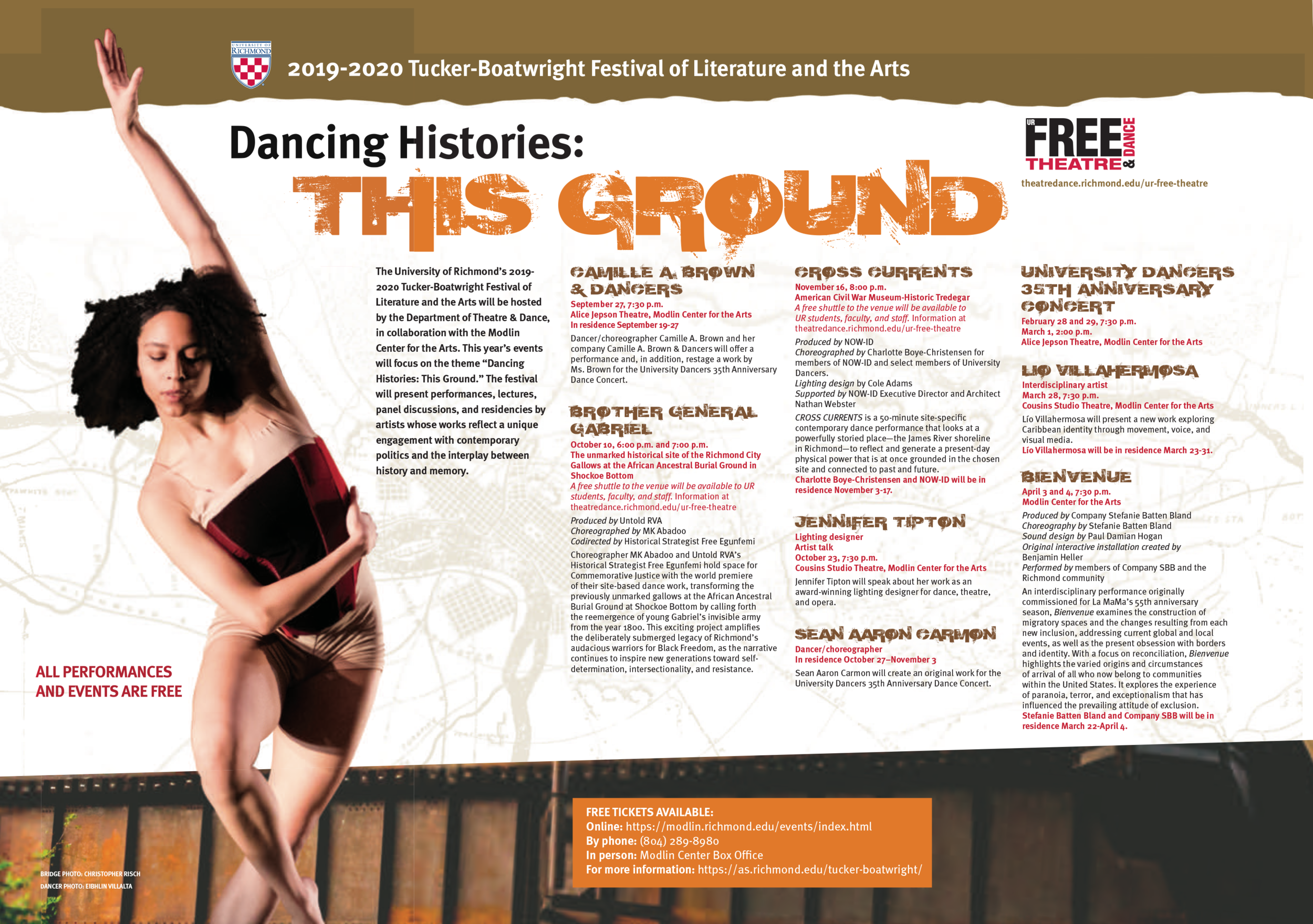
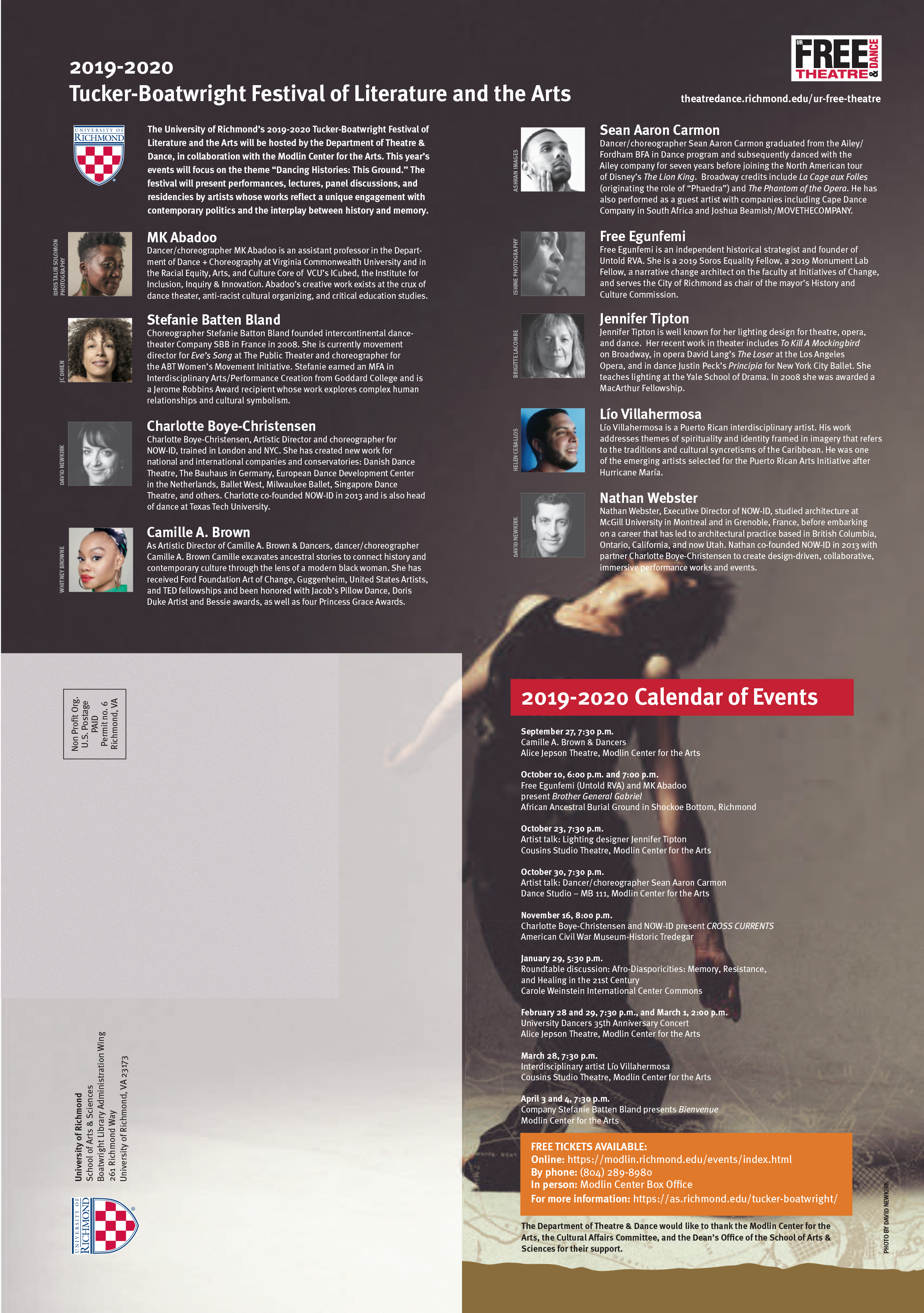
We are excited to be part of this festival in November. If you are in Richmond on November 16th, come to the Tredegar Iron Works museum, where we are performing a newly commissioned work. More information to come!
